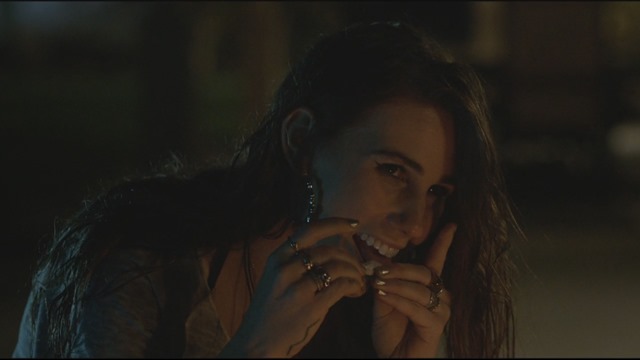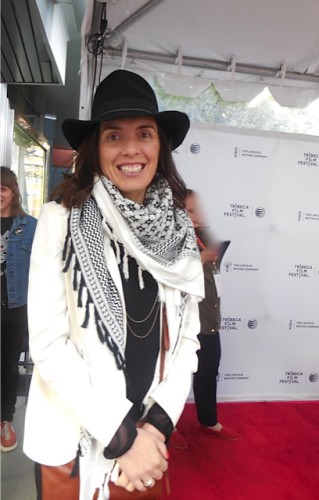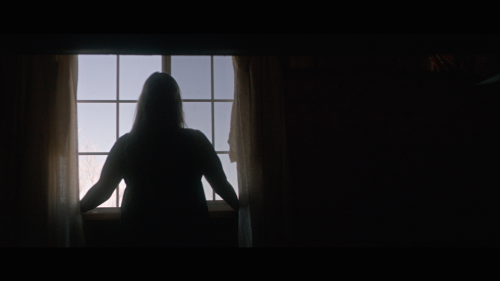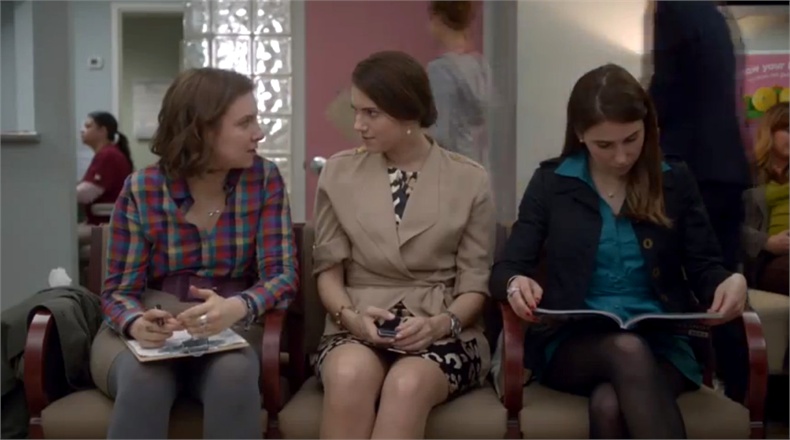Written by Katherine Murray.
Written and directed by Diane Bell, Bleeding Heart is about class privilege, moral hypocrisy, and the arrogance of preaching nonviolence to people about to be killed. Mostly, though, it’s a chance to watch Zosia Mamet play someone other than Shoshanna and drink in a dark but gorgeous color palette.
Having premiered at the Tribeca Film Festival in 2015, Bleeding Heart tells the story of an ashtanga yoga teacher named May (Jessica Biel), who makes contact with a half-sister she’s never known (Zosia Mamet), and quickly has a crisis of conscience over how she should behave.
May’s sister, Shiva, is in a much different financial position and living with a boyfriend who treats her badly. As May gets to know Shiva better, she finds out that this boyfriend, Cody, is also Shiva’s pimp, and doesn’t seem to care very much for her safety. May feels the need to get involved, and tries to help by giving Shiva money, giving her a place to stay when she can’t go home to Cody. She tries to convince her to leave him for good but, the longer the situation goes on, the less it looks like there’s going to be a peaceful solution.
May’s interaction with Shiva is complicated by the fact that her business and romantic partner, Dex, doesn’t think they should get involved in the drama unfolding between two people they don’t really know, as well as by the fact that Shiva doesn’t always tell the truth. In the end, though, May has to decide whether she really believes in ahimsa – the principles of nonviolence at the core of her spiritual beliefs and practice – to the point of letting someone else get killed.
Spoilers, but the final act involves a lot more guns.
I get what Bleeding Heart’s trying to do, and I think it’s really interesting, even if I don’t always buy the execution.
At its core, the story is about a really specific, new age hypocrisy in which we claim to heal ourselves and the world by ignoring the harsh realities and difficult choices less fortunate people face. The key conflict in Bleeding Heart isn’t between Shiva and Cody or May and Cody or Shiva and May – it’s between May and Dex. May wants to help Shiva even though she doesn’t know her very well, even though it makes her life difficult, and even though Shiva might not even be her sister – Dex wants Shiva to go away and stop disrupting his positive energy. He’d rather use his and May’s money to build a new yoga studio than help Shiva pay her rent, and the point he brings up, over and over again, is, “This doesn’t have to be our problem.”
Bleeding Heart plays May and Dex against each other to show us how May’s choices reflect a conscious move away from the beliefs she held at the start of the film – a move toward an understanding that there’s a kind of arrogance in preaching nonviolence to people who live in real physical danger. She’s struggling with the idea of what it really means to help someone, and whether it’s enough to say that she helps people by teaching yoga practice. Ultimately, she finds that the only way to make a difference in the world is to do things she never thought she would do – she finds that there are some situations where nonviolence just isn’t an option.
May’s personal journey comes across really well in the film, so I was disappointed that the other characters seemed a lot less rounded in comparison. Dex is so self-centered that he can’t even process the concept that May might care about something else in addition to the yoga studio. When May tells him that she wants to take a day off work to meet Shiva for the first time – having hired private detectives to search for her for months or years – he tells her that meeting Shiva will probably be emotional for her and distract her from the business for more than a day, so she shouldn’t go yet. Even taking into account that he’s supposed to be a hypocrite, I find it hard to believe that he would just casually tell his partner to blow off meeting a long-lost, long-sought relative to focus on building a new yoga studio. Just like I find it hard to believe later on that he completely doesn’t care that Shiva’s boyfriend is abusive, even if he doesn’t want to be involved.
It’s part of a larger pattern in the film where the details of the characters’ motivations don’t ring true and drain some of the power from the story. It often feels like Dex, Cody, and Shiva make their choices based on what the plot demands of them, so that May can learn something new and grow as a person.
Aside from that, the cinematography is gorgeous and Mamet and Biel are both stretching themselves as actors, which is fun to watch. I especially gained a new appreciation for Mamet – she’s so good at making her lines sound like something she just came up with that it’s easy to forget how much skill that really takes. There are times in Bleeding Heart when she doesn’t have a lot to work with but definitely makes the most of it.
You can find Bleeding Heart on DVD and VOD in North America and the UK, where it goes by the name Bound by Blood.
Also on Bitch Flicks: Paula Schwartz interviews director Diane Bell about Bleeding Heart
Katherine Murray is a Toronto-based writer who yells about movies, TV and video games on her blog.













